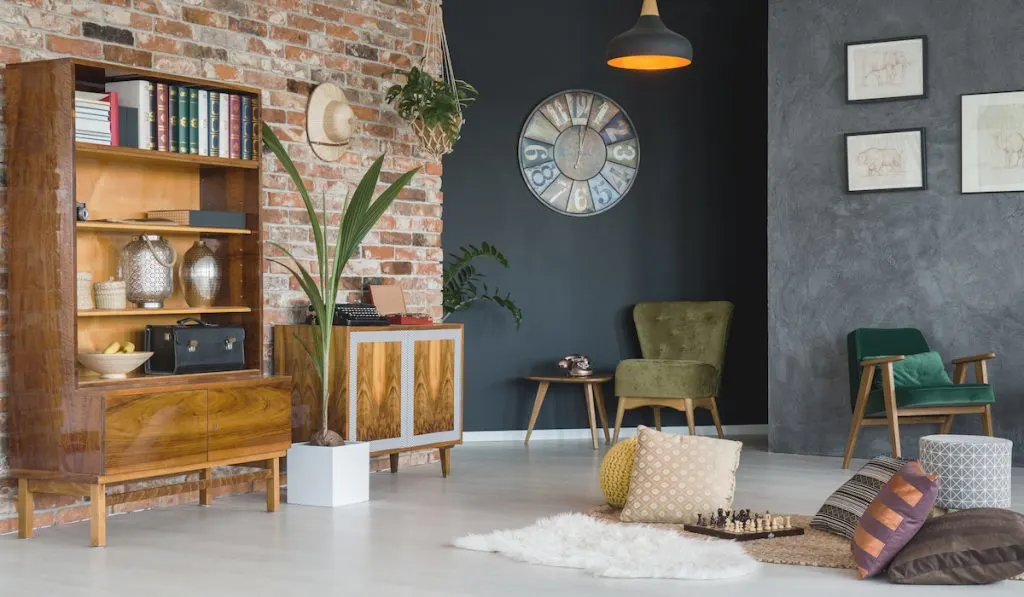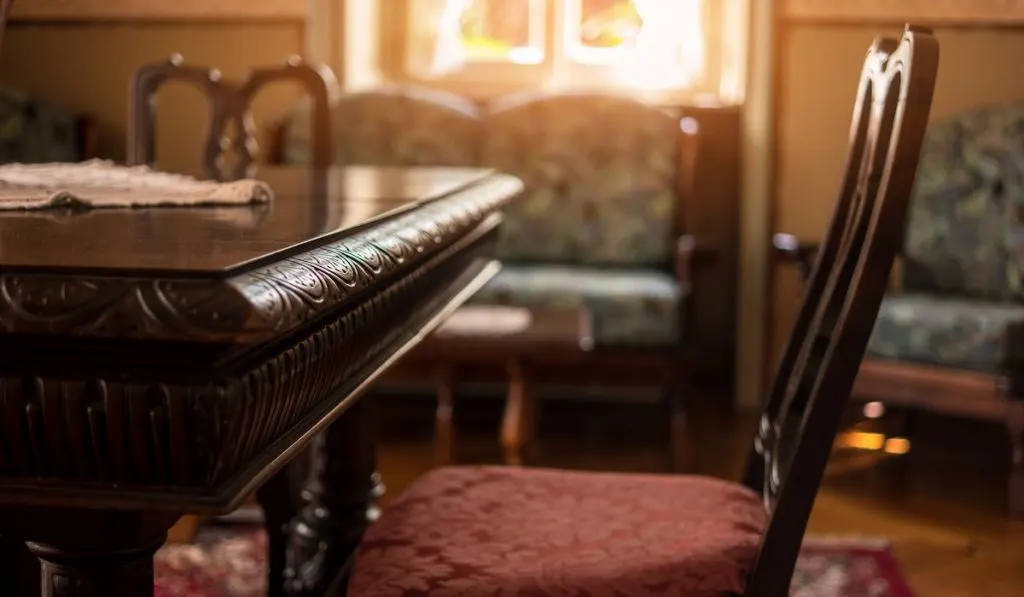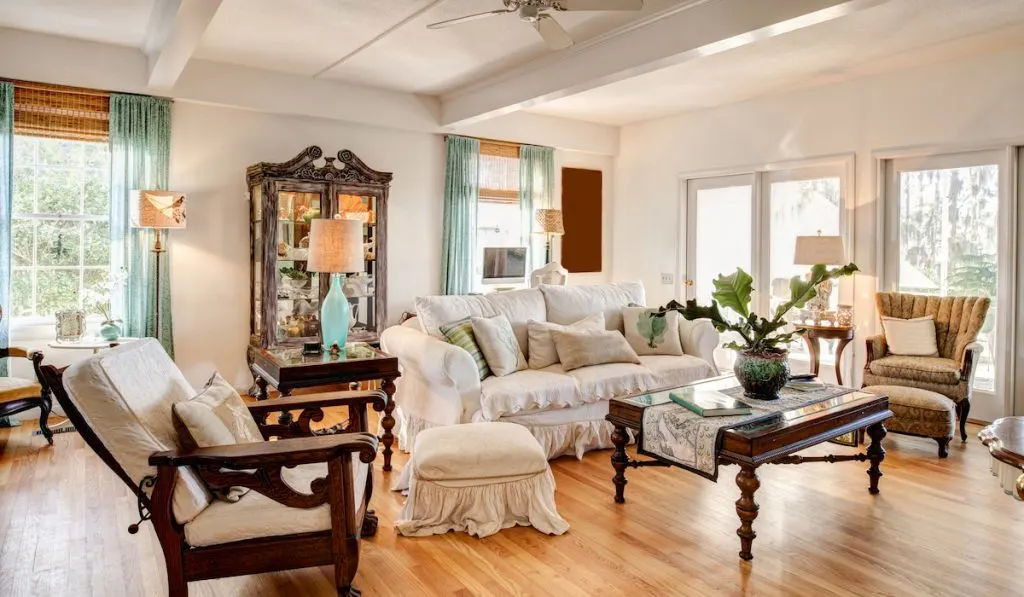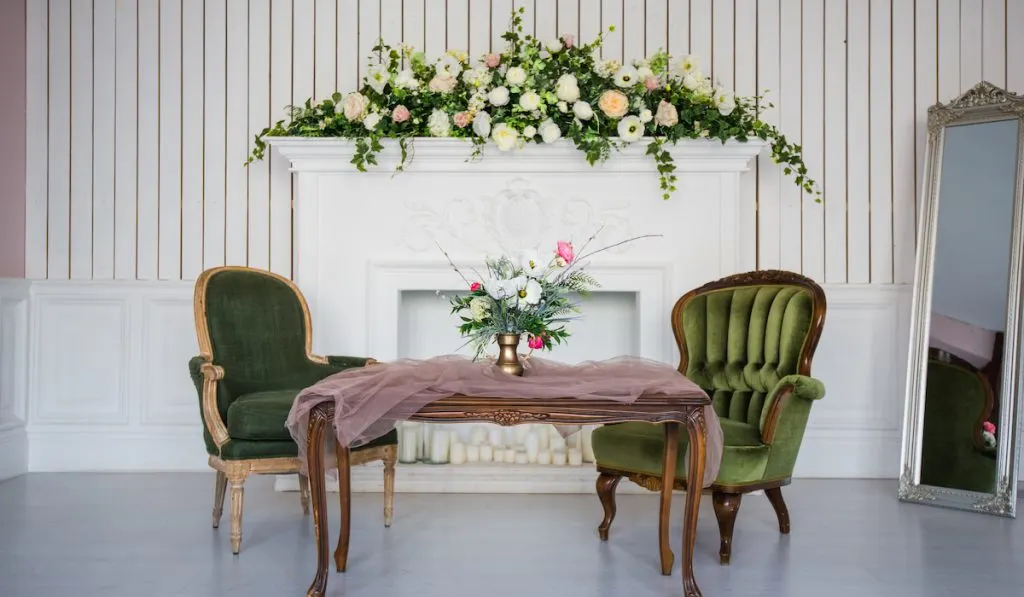Modern furniture, as it suggests, is a type of furniture that embraces the styles of today’s contemporary design world, embracing a simple and rather clean look.
The main features for this type are the smooth surfaces, minimalist designs, clean and straight lines, and warm neutral colors that are accented by slightly vivid hues.
This type of furniture embraces both metal and wood as building materials.
A piece of antique furniture on the other hand is characterized by its age, status, condition, rarity and other outstanding conditions, depending on the era they were made.

They have a wide range of applications in any room, from decoration to day to day use, depending on the desires for its existence in a room.
For a visually appealing interior, it is good to carefully blend both the modern and antique pieces of furniture in any space, as it adds a unique contrast, with varying shapes, styles and textures in a single room, creating a timeless visual nostalgia.
Let’s take a quick look at how modern and antique furniture can be mixed to have a more desirable general look and more specifically in the rooms.
1. Know your taste
Before you start collecting furniture pieces for your space, you should, first of all, know what you love and desire to be in the space.
You do not have to rush to acquire lots of furniture, whether modern or antique, to fill your space and in the end leave out what could have been more appealing and satisfactory to you.
You should have a collection to create an impression that you have been carefully collecting your pieces over time, and they should just be the right items for your space.
Also consider other rules of blending the furniture like scale and balance, so as not to lean too much on a style and ignore other possible combinations that would have worked better.
2. Master and use repetition to your advantage
You should aim at creating a cohesive look in the room. Throwing many styles in one space will create a rather desperate and confusing look.
Pulling off the cohesive look is therefore easy if you can consider collecting the pieces, at least based on one mutual attribute such as color and material used, to make it possible for an individual item to identify with other items in the room.
3. Smaller spaces require oversized pieces
It’s easier to create an impression that a room is actually larger than it is by using oversized antiques, such as a huge antique table, which can be perfect for a smaller dining room when blended with modern chairs around it.
Large antique sofa sets or a large table can also make your living room seem larger than it is.
This tip is all about the master’s creativity and the ability to import and blend different styles and pieces together, and how they can play with other proportions to have a sense of grandeur in rather smaller spaces.

4. Show the vintage difference in your pieces
Having furniture pieces from a specific era can be a bit cliché and monotonous, and is, therefore, necessary to have a blend of pieces from a range of eras.
Be precise and distinguish the key areas to focus on, when choosing furniture from maybe the 80s or the 90s, depending on your preference, to fit the space and serve the purpose that is meant for them.
As an example, you can add personality and storage to a sleek kitchen by installing an antique cabinet, while the other pieces of furniture may be contemporary.
To achieve a look of the careful collection over the years in history is also achieved by having vintage and antique furniture with different designs.
5. Use the 80/20 rule of decoration
This rule dictates that when blending styles, say antique and modern, it is acceptable to have one style predominantly occupying the room, then add accents of the other.
A good example is when blending in a room, you can have 80% being the contemporary and modern design, and the remaining 20% being of vintage pieces, which should be large for them to rightfully speak out and demand their space in the room.
To avoid monotony, it is important to choose designs that harmonize rather than match. In this regard, if your room space is full of modern pieces of furniture and monochromatic fabrics, you can consider adding pillows with large floral patterns or add large solid colors to a traditionally filled room.
6. Adjust lighting and reflections
Proper and appropriate lighting can easily blend and combine vintage and modern, even if you are uncertain of what or how to blend the individual pieces in a room.
By simply focusing on the light a Tiffany glass chandelier or a salvaged pendant lighting offers, anything in the room simply comes to harmony with each other.
You can also have a beautiful mirror for reflection in the room.
7. Opposites attract
Both the antiques and modern pieces clearly distinguish and contrast with each other. You can, however, create a visual harmony by blending the two in such a way that a piece of antique furniture can accommodate a modern piece or a piece of modern furniture accommodating an antique piece.
An example is having an antique bedside table holding a modern lamp, or a modern table holding an antique lamp.
In the office, you can have an antique table with modern chairs around it, and the inverse also creates a beautiful blend.

8. Color clash and do unexpected combinations
It’s good to stick to one color scheme for your interior. However, blending the modern and antique is all about contrast.
It is therefore acceptable to have maybe two colors predominantly ruling the room, and have other colors with a more inferior hue with multiple tones crisscrossing other spaces within the room.
You should however carefully choose the colors to go with, depending on your taste, to maintain a balance and avoid unwanted color clashes. This will create a cohesive look that evolves periodically.
9. Repurpose your furniture
For every antique furniture, their history elevates their value. This doesn’t, however, mean that they should maintain their place and position forever. It makes a huge difference reshuffling them around the house.
For example, you can have antique pieces that have historically been in the bedroom relocated to the living room, and they would give a totally different, beautiful and perfect look in their new space.
10. Add appropriate textiles
Hand-knotted carpets, shag-pile rags and animal printed carpets among others, are all vintage textiles that add a sense of timelessness to your blended space.
Depending on the furniture you have in the room, this dictates the kind of textile you should have on the floor, such as earth-toned carpets to match brightly colored furniture pieces.
11. Pick a dominant wood tone
It is common to find furniture of different wood textures in a single room, but choosing a dominant wood tone connects them all as the focal point.
Wood tones can either be warm, cool, or neutral. Warm tones are those with yellow, red and orange.
Cool tones are those green, blue or greyish in color while those that are neutral are beige, and they go with both cool and warm tones of wood.
If you have a wooden floor, this would be a good focal tone to start with and should be used as a reference in choosing other furniture tones.

12. Let the odd piece shine
Odd one out pieces are common, especially in vintage furniture. For them to shine, they should be used as the focal point in the room, and every other piece should be placed appropriately in a way that recognizes the focal piece.
Take an example of an old wooden mahogany table amongst modern sofas or chairs. The table should be placed at the center of the living room with the chairs and other furniture pieces around it, to make it conspicuous.
Conclusion
When blending modern and antique furniture, creativity is highly rewarded, as long as the designer does not over-do one style, or maybe lean too much on a color or design.
The blended space should be carefully attained also, with the help of an expert depending on the taste of the space owner.
It won’t make sense to have a fully blended space and have the owner dislike it because he/she would have preferred having their space in a different manner.
Resources
- https://www.bassettfurniture.com/blog/what-is-modern-furniture.aspx
- https://en.wikipedia.org/wiki/Antique_furniture
- https://www.onekingslane.com/live-love-home/mixing-modern-and-traditional-furniture/
- https://www.engelvoelkers.com/en/blog/interior-design/home-design-ideas/seven-essential-tips-for-mixing-modern-and-antique-furniture/
- https://www.stylemotivation.com/5-clever-tips-combine-antique-pieces-modern-furniture/
- https://www.styleathome.com/decorating-design/design-lesson/article/design-lesson-how-to-mix-styles
- https://www.thespruce.com/mixing-antique-accessories-into-modern-decor-1976754
- https://witanddelight.com/2020/04/how-to-decorate-your-home-by-mixing-modern-classic-and-vintage-pieces/
- https://skicountryantiques.com/blogs/news/definitive-guide-to-combining-antiques-with-modern-furniture
